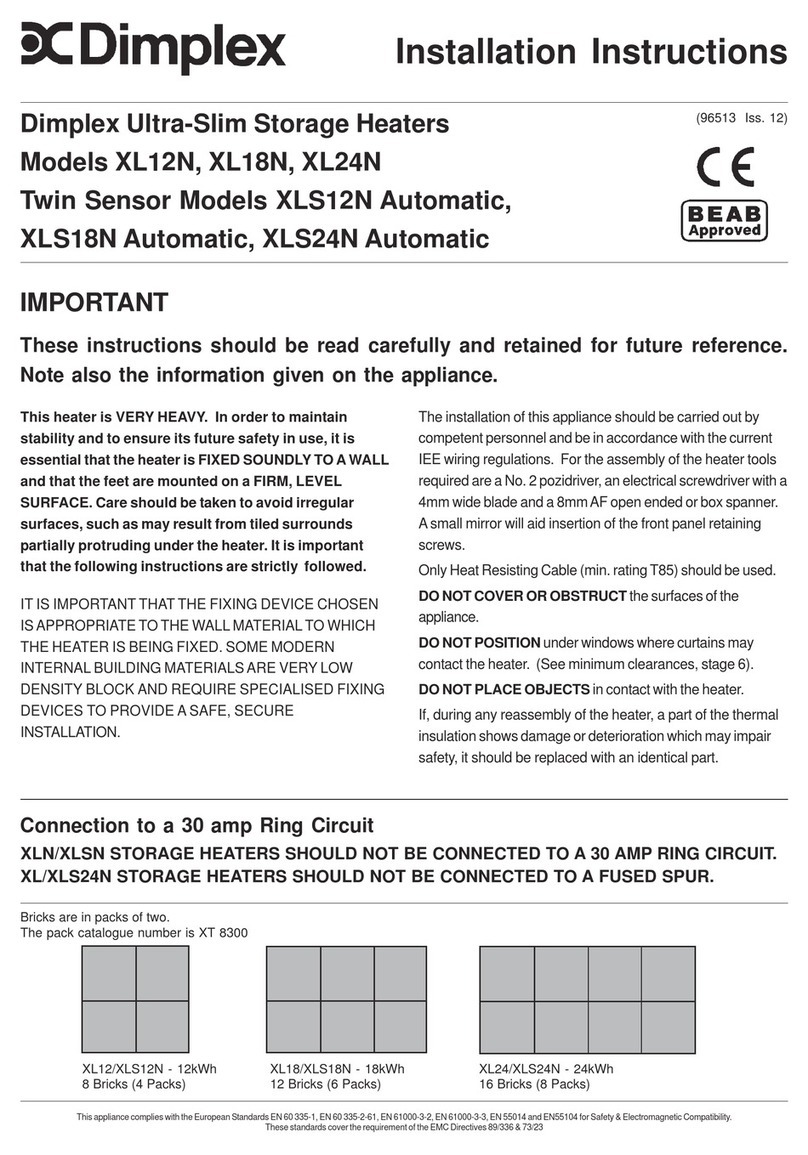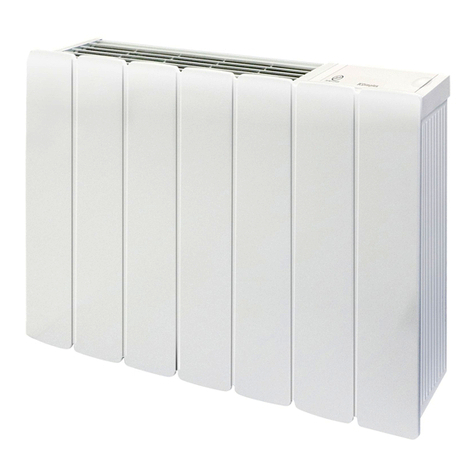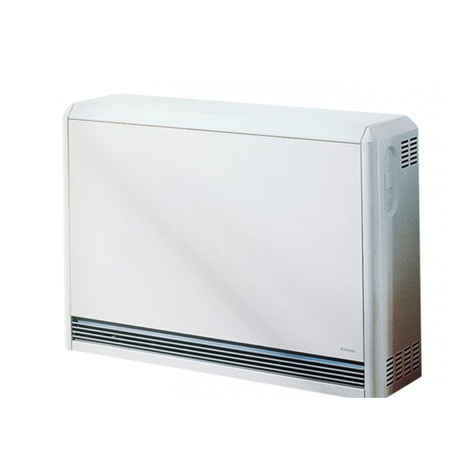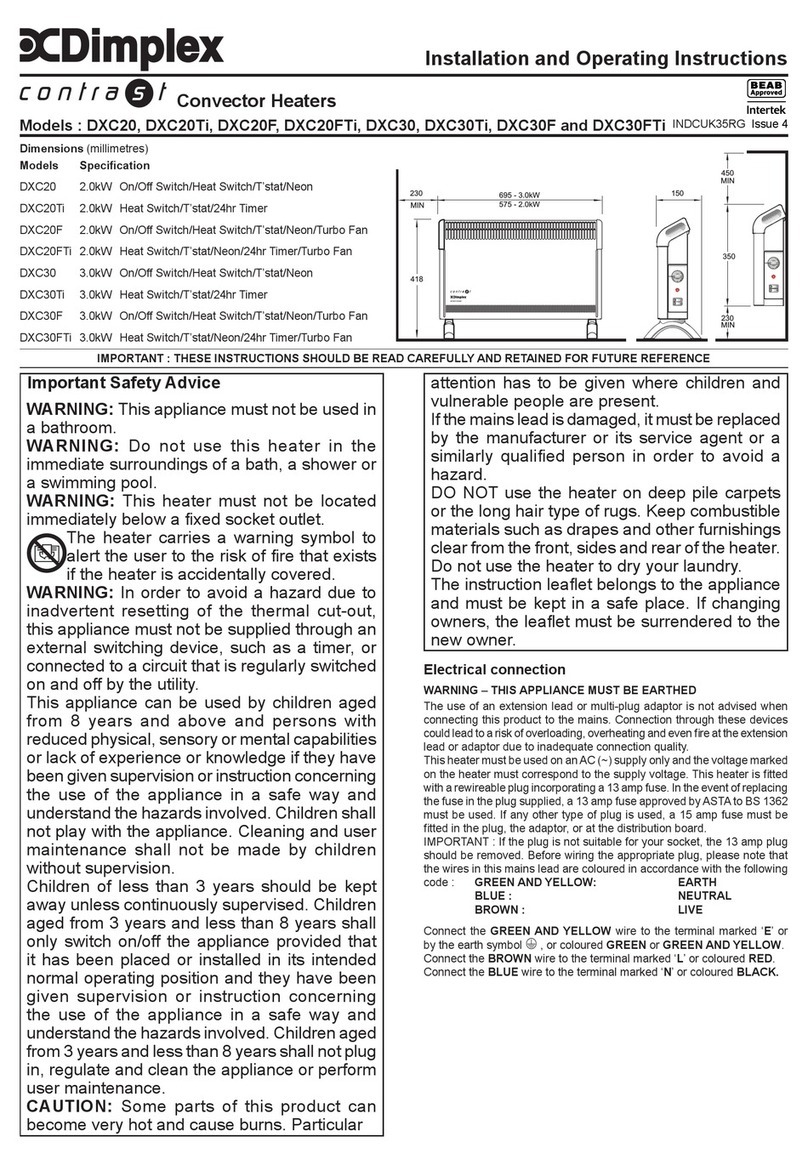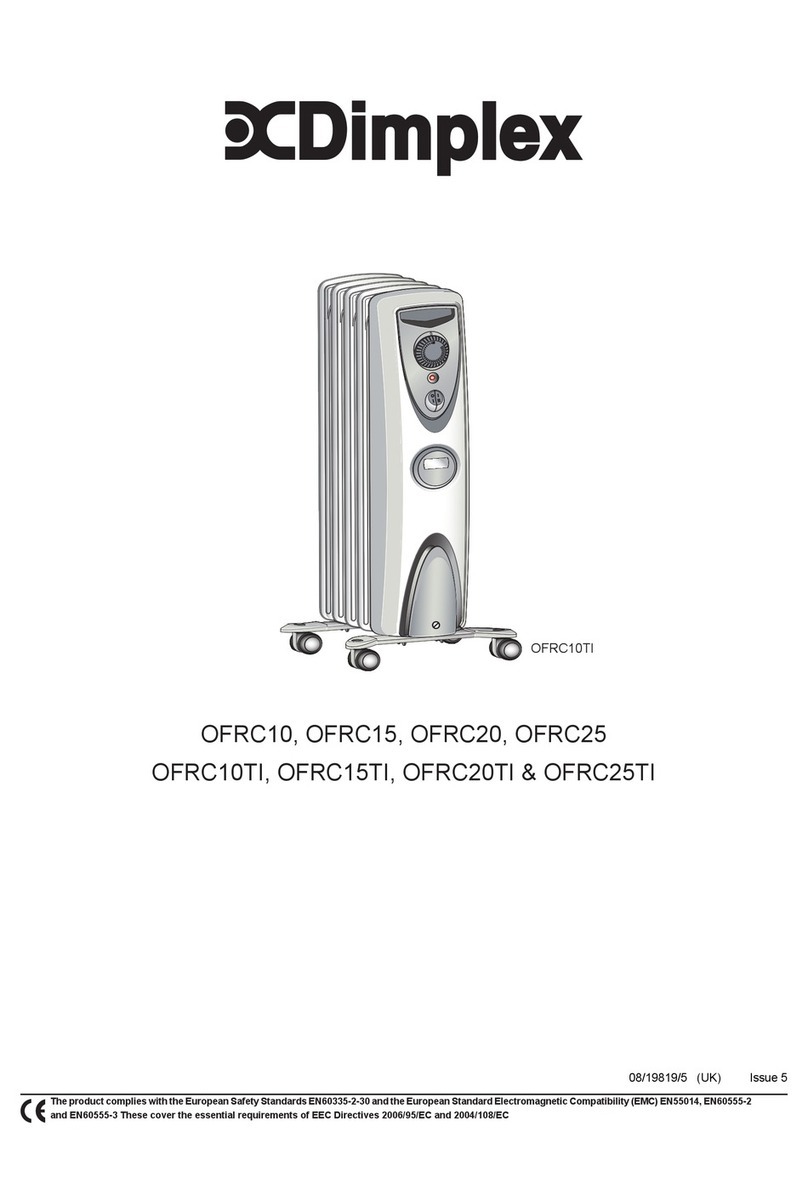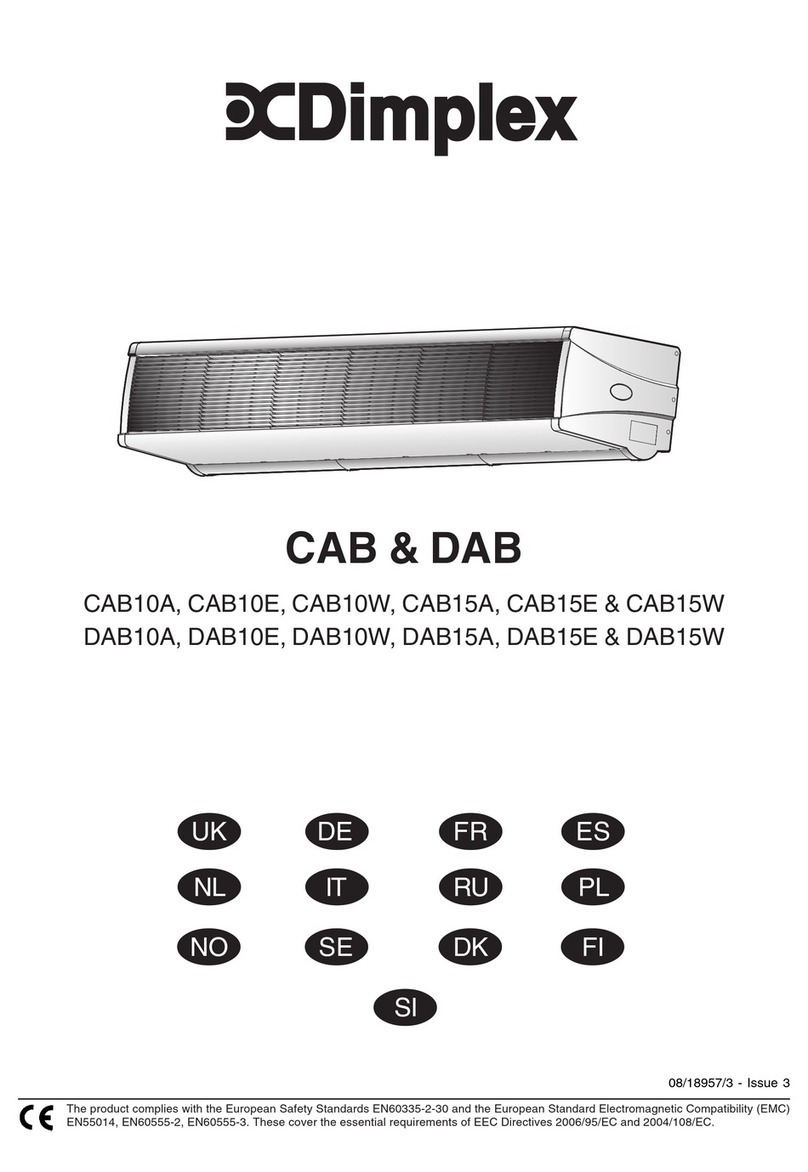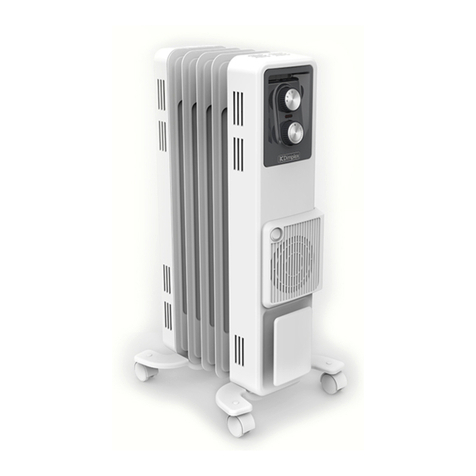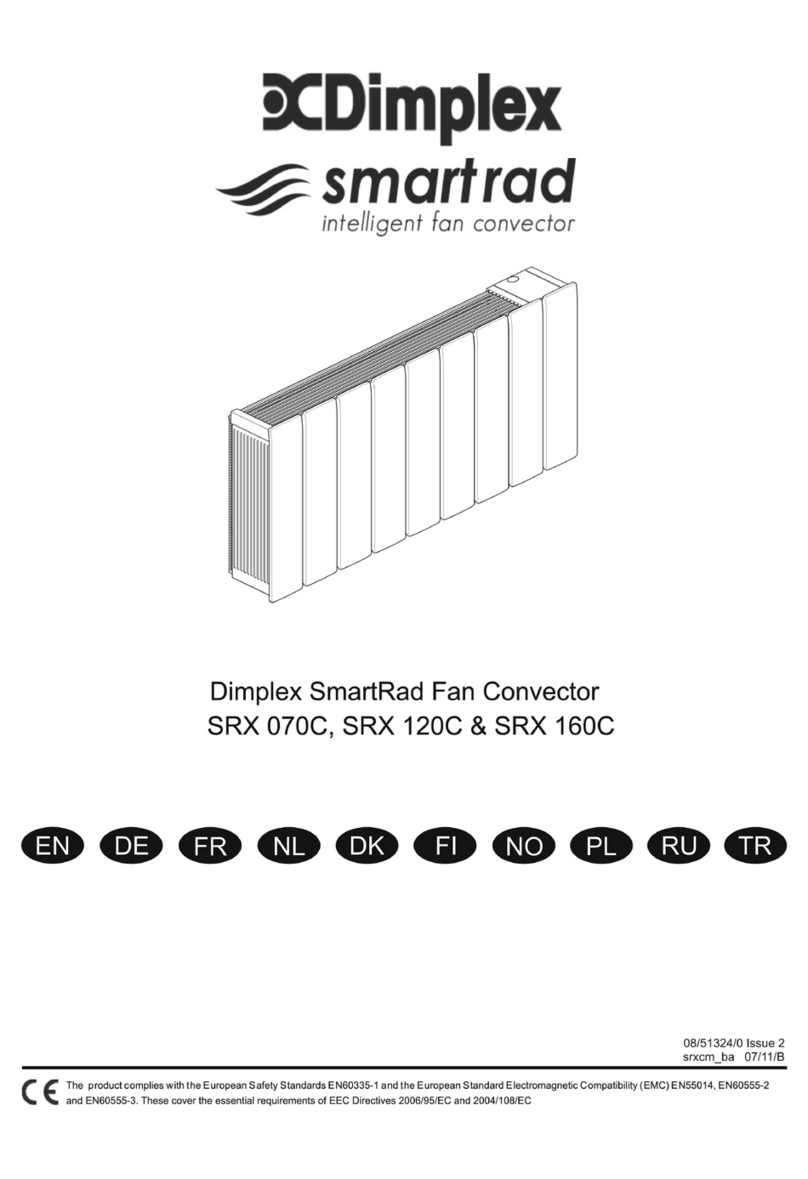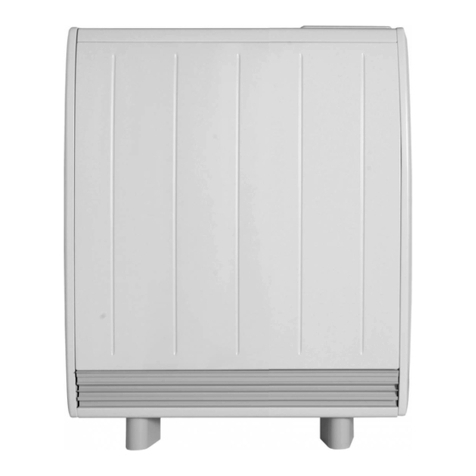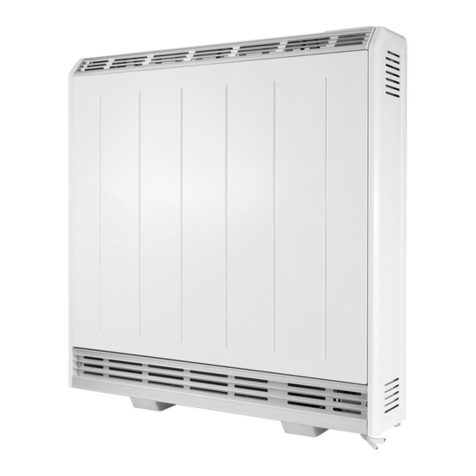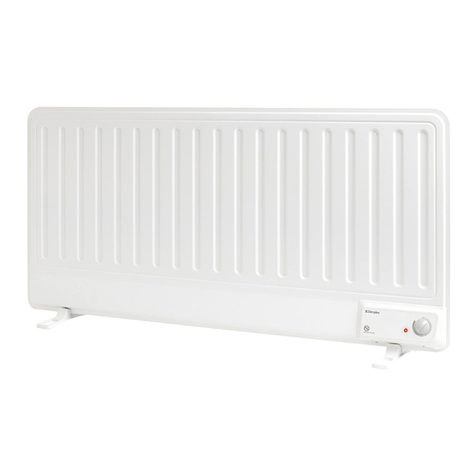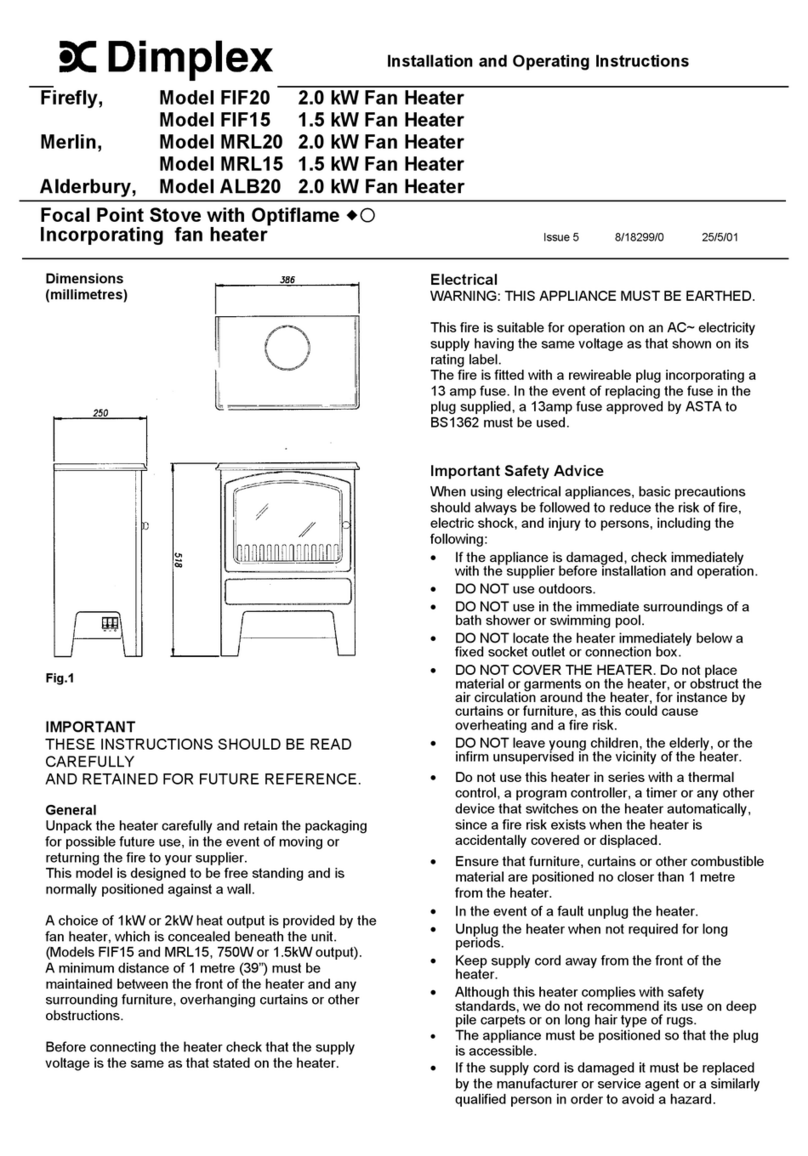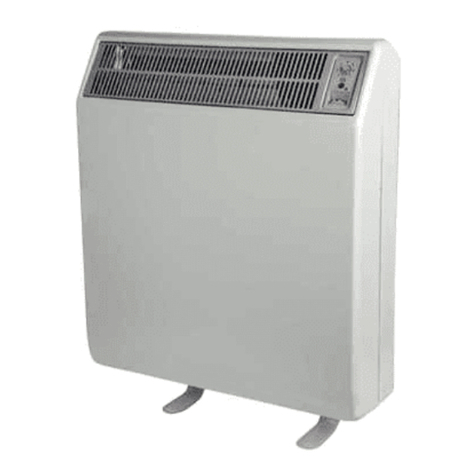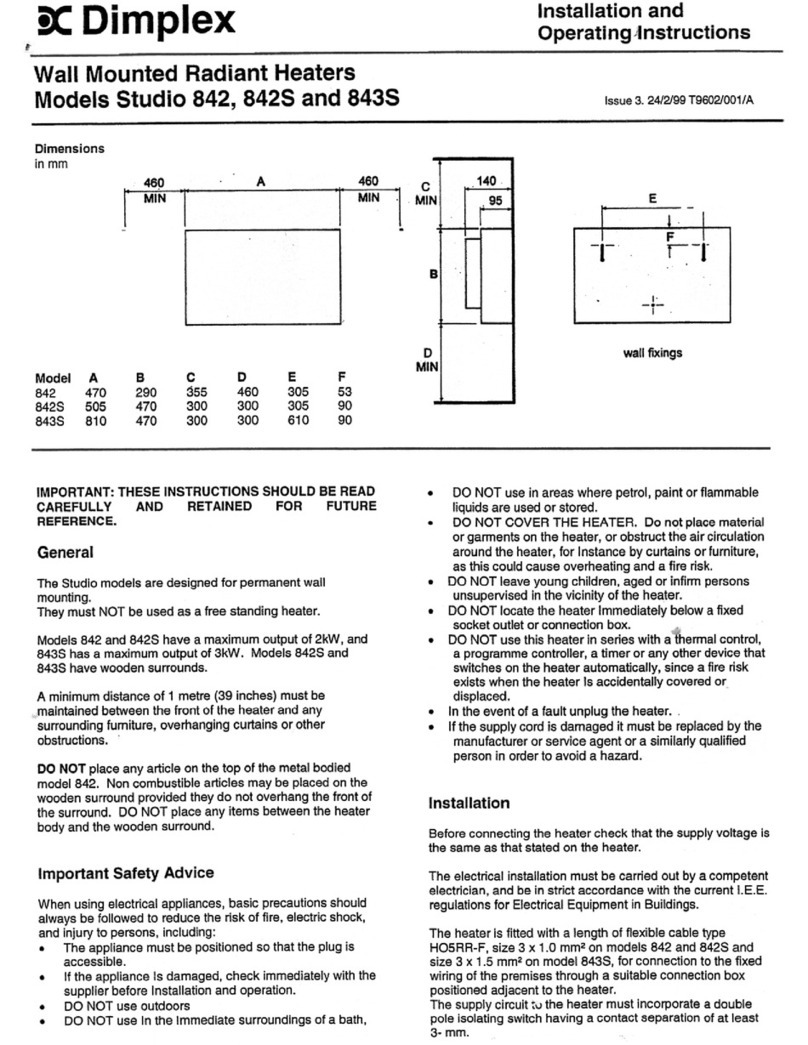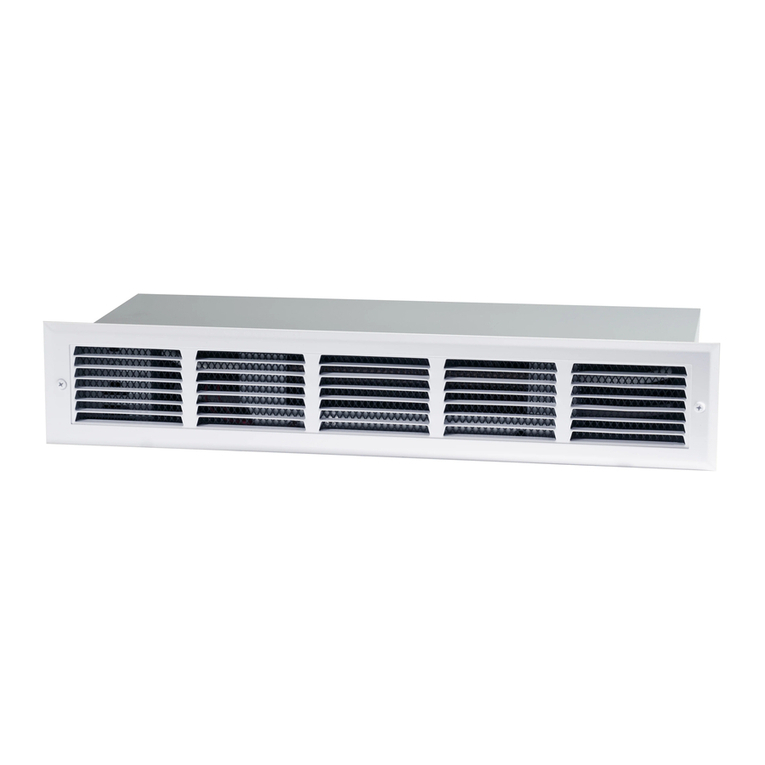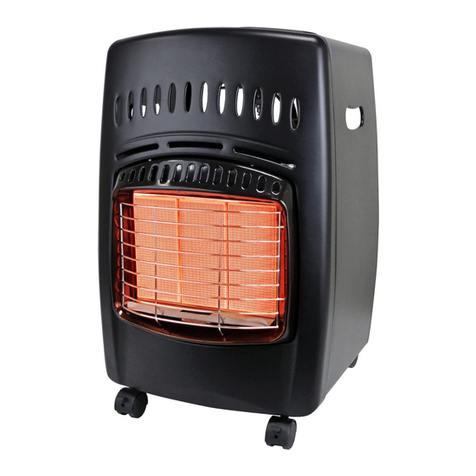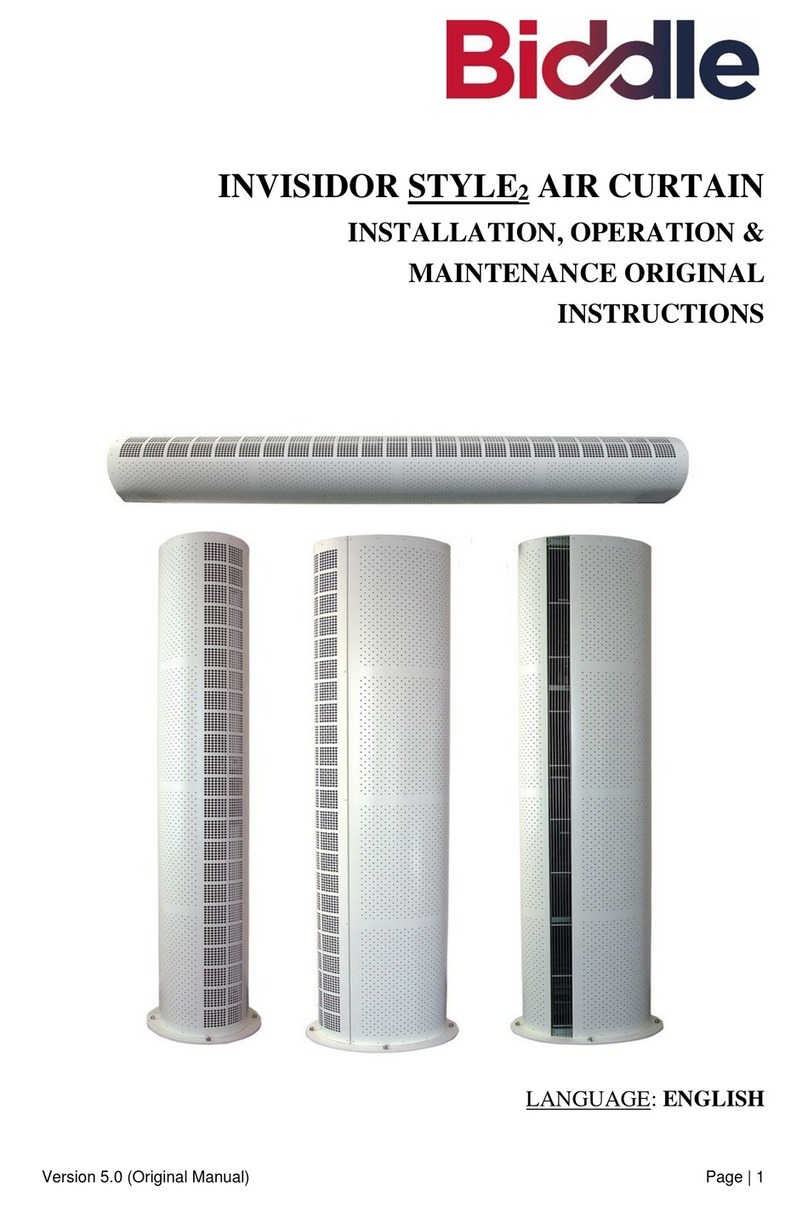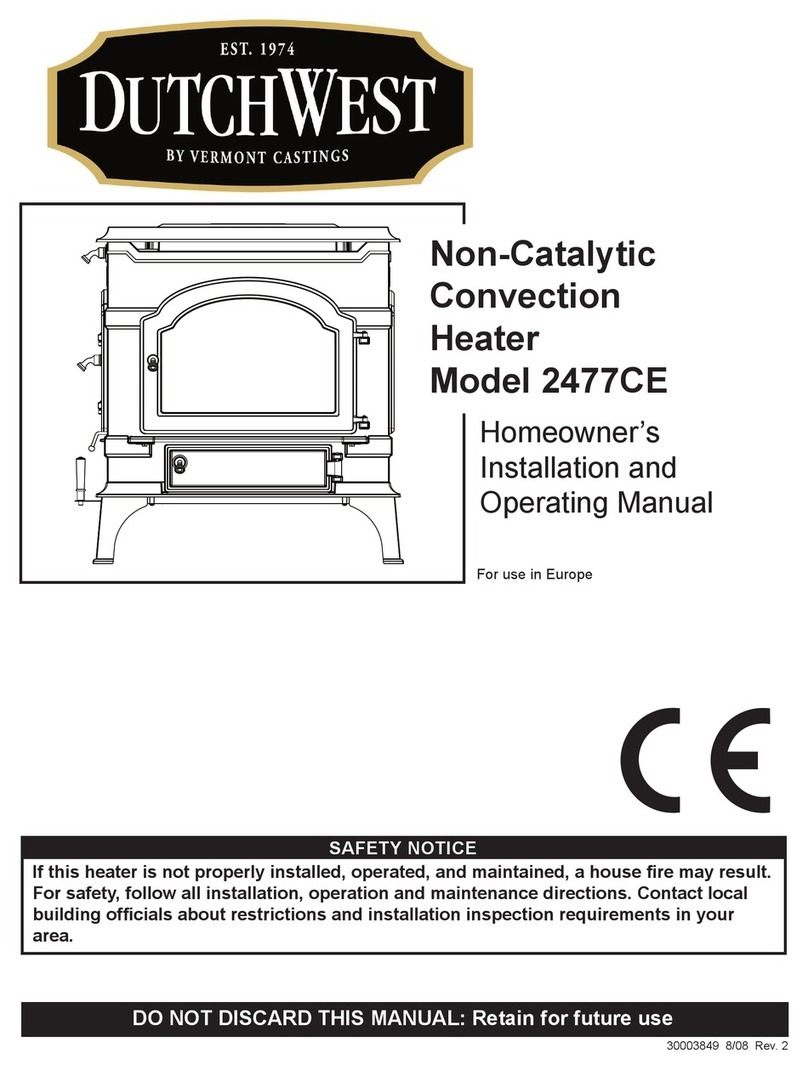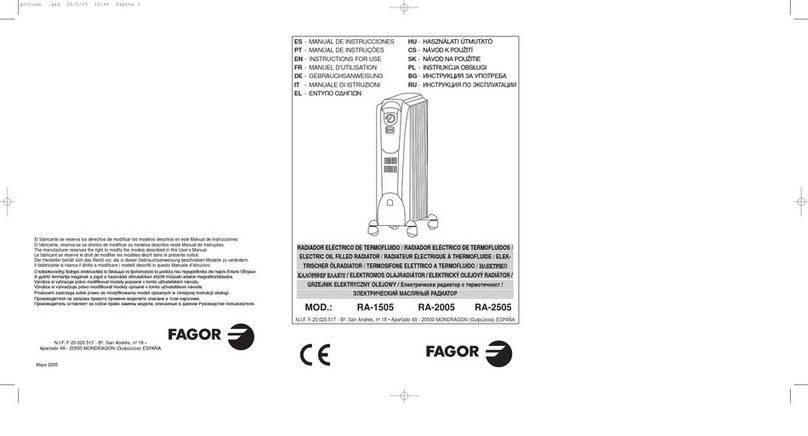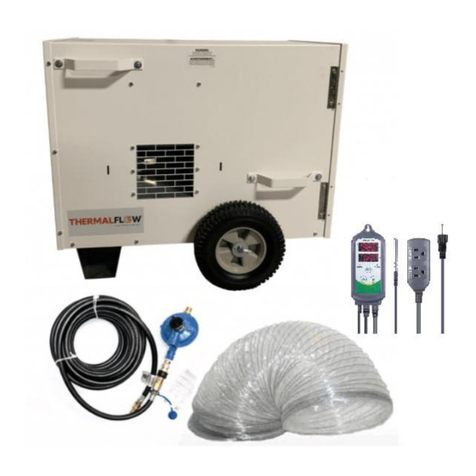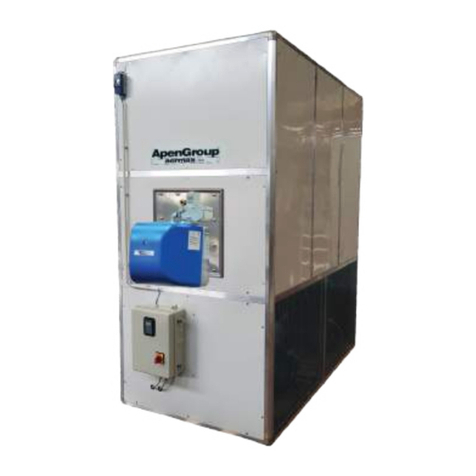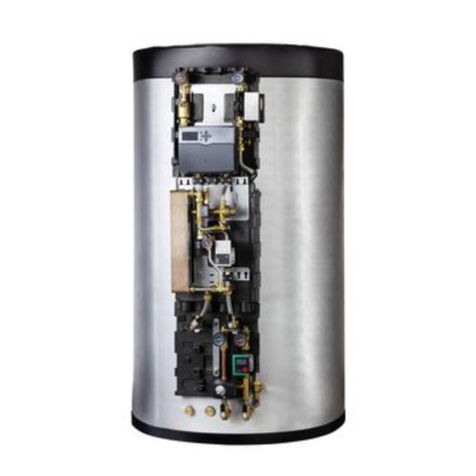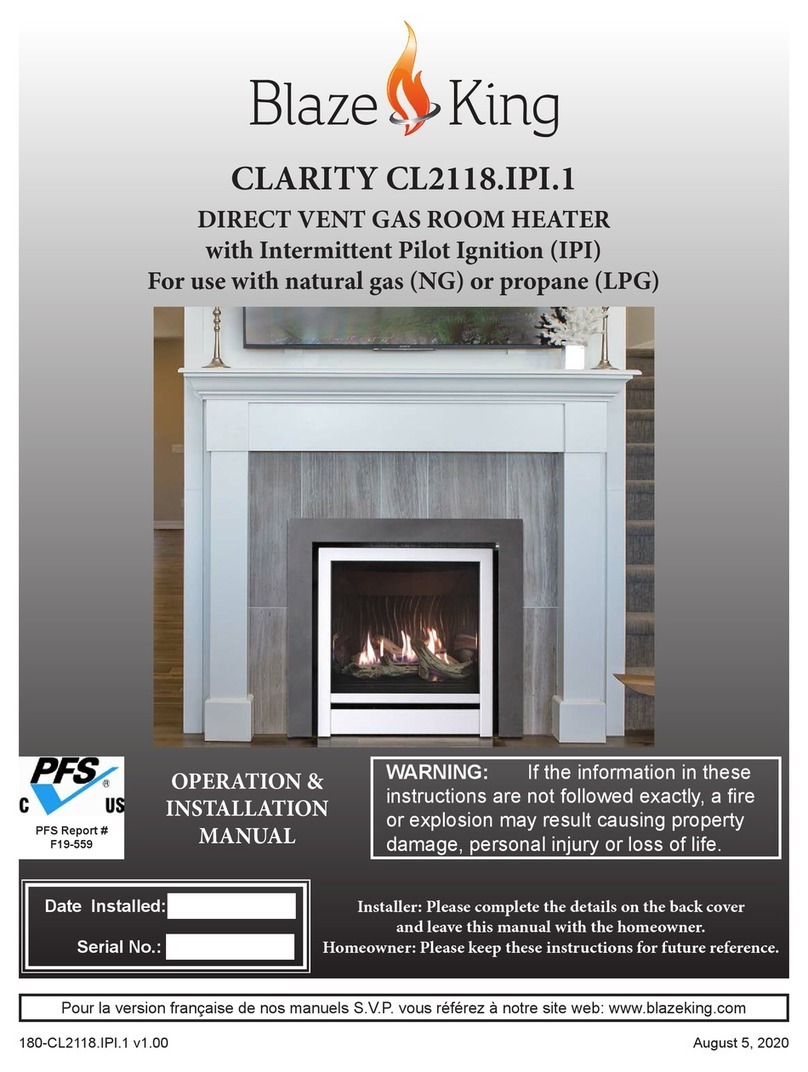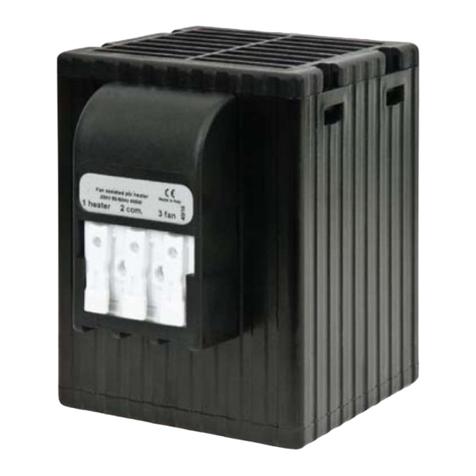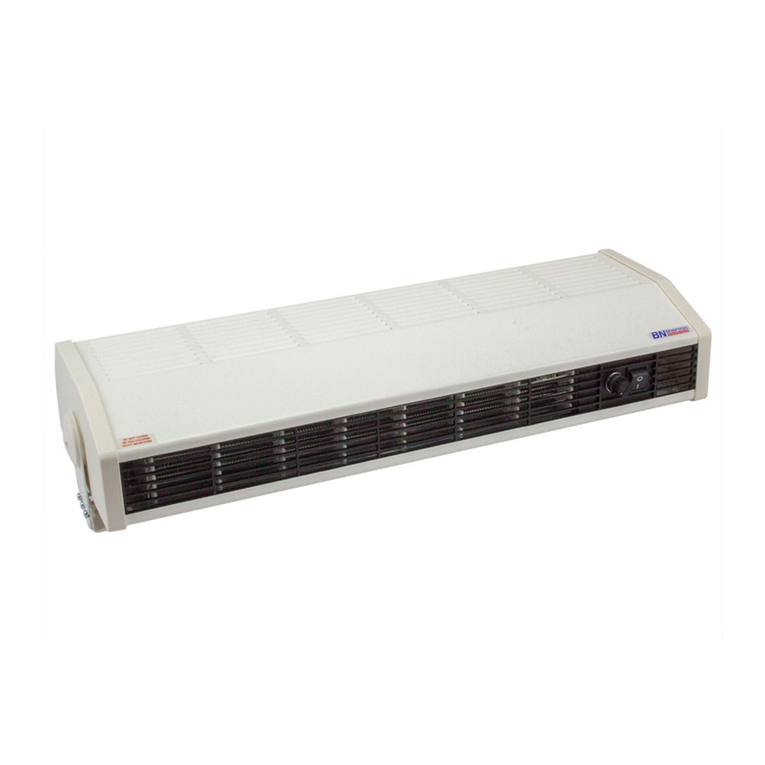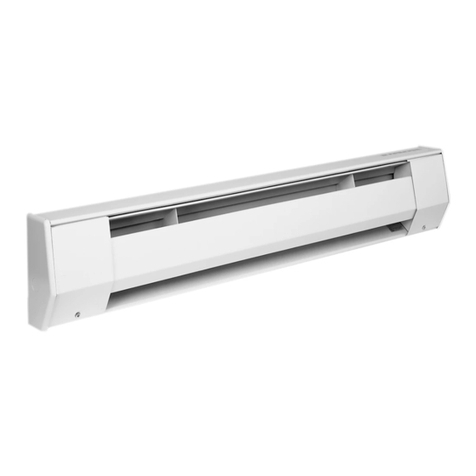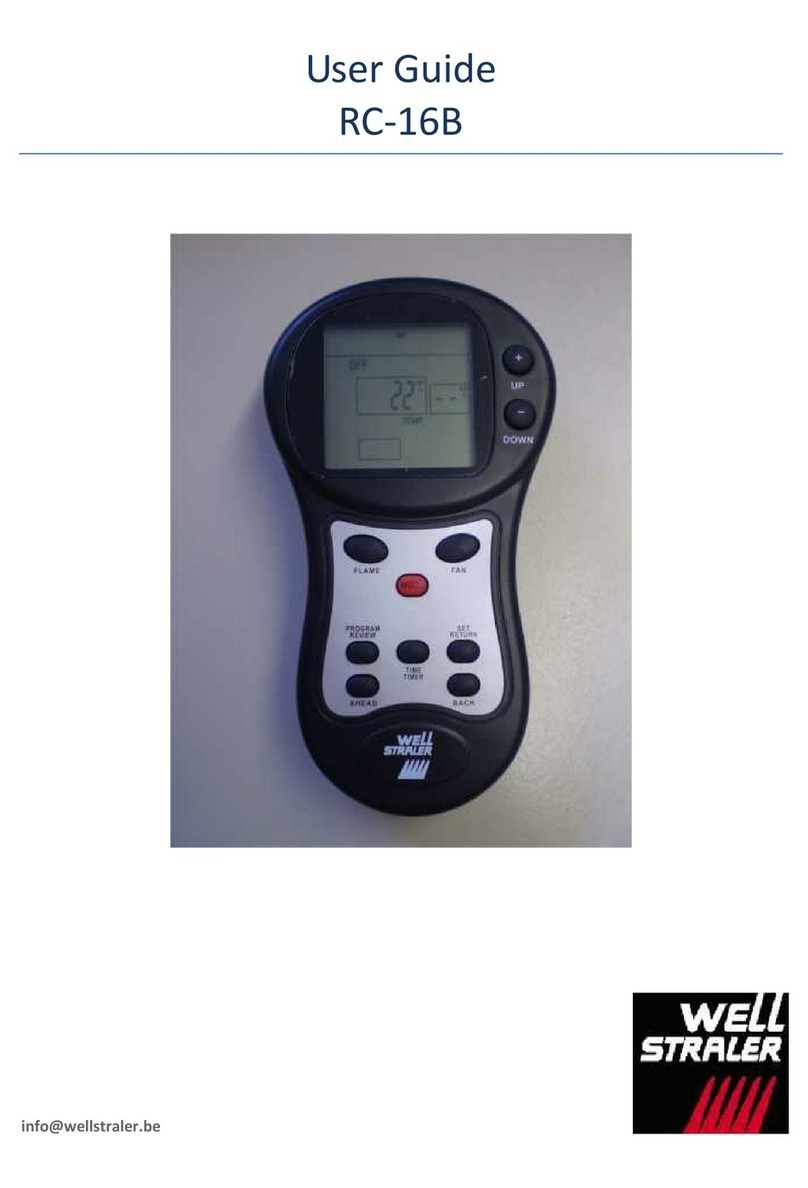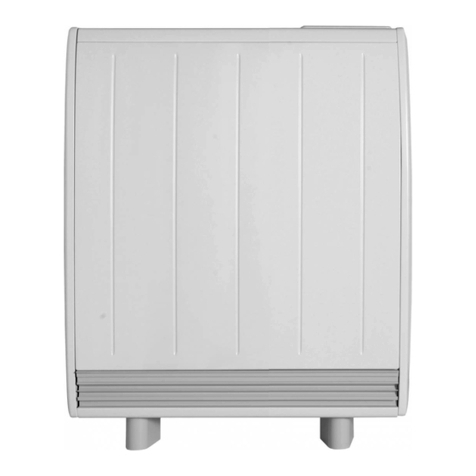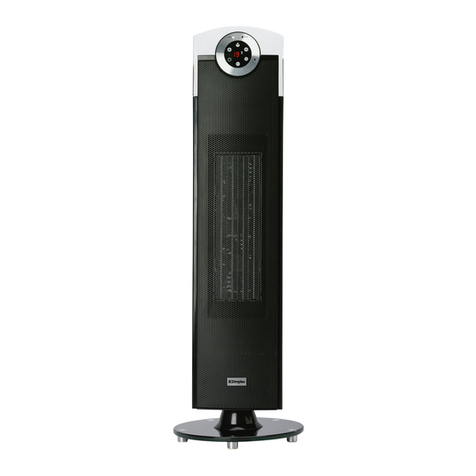Fig. 4
(model 3072 shown)
Positioning the heater
Always ensure that the heater is stood on a firm, level base near to, but
not directly beneath, a suitable mains supply socket.
Ensure that curtains and furniture are not positioned close to the chosen
position, as this would create a potential fire hazard.
We recommend that the heater should be wall-mounted in rooms where
children may be left unattended.
See also ‘Important Safety Advice’.
Free standing use
NEVER USE THE HEATER FREE STANDING WITHOUT THE FEET
FITTED.
Lay the heater on its back,
and locate the foot fixing
screw (see a. in Fig. 3).
Remove the screw using
an X–head screwdriver,
then align foot over slots
and holes in base (see ‘b’
in Fig. 3) and push into
slots until the foot clips
into place.
Finally take the foot fixing
screw, insert and tighten
using a screwdriver to
secure the foot.
Fig. 3
NOTE – The wall mounting brackets indicated in Fig. 3 can be left secured
to the base if they are not required.
Using the heater
Plug in and switch on at the wall socket.
On standard models with a neon, the red POWER ON neon will light when
the heater is connected to the power supply.
The timer clock will operate all the time that the heater is connected to the
mains supply.
Set the timer control switch as required for
OFF, Manual or Automatic operation –
see ‘Timer Operation’.
On models 3073 & 3078
the heat selector switch positions are
as follows :
I- Low heat output
II - High heat output
On model 3078 there is also an
On / Off switch - operation as follows :
O- Off
I - On
On model 3077 there are two neon On/Off heat selector switches allowing
selection of half heat ( one switch on ) or full heat ( both switches on ).
The heat output is controlled by the thermostat - see ‘Thermostat’
Please note – the element has been coated with a protective film which
will burn off during the first few minutes of use and may cause a small
amount of fuming. This is quite normal – the fumes are non-toxic and will
quickly disappear. We recommend that you open a window to ventilate the
room when using the heater for the first time.
Controls
Thermostat (all models)
The thermostat controls the heat output according to the room
temperature.
This ensures that the heater will not produce heat unnecessarily when the
room is warm.
To set the temperature you require, turn the thermostat knob clockwise
until the desired temperature is reached. Alternatively to heat a cold room
quickly, turn the thermostat knob up fully. When the room has reached the
desired temperature, turn the thermostat knob anti-clockwise until the
thermostat just clicks off.
The heater will now automatically operate at this temperature.
The thermostat also has a frost protection setting marked ‘∗’. This setting
is useful in areas such as garages to prevent frost damage. If the
thermostat is set to its minimum setting ‘∗’, the heater will cycle ON and
OFF to maintain a temperature of approximately 5°C to help protect
against frosty conditions.
Timer Operation
Set the I- ¡- 0slide switch on the timer
(Fig. 5) to :
Position O - Heating Off
Position I- Manual operation
– This setting allows power to the heater
uninterrupted by the timer settings. The
heat selector switch will control the
output (see ‘Using the heater’).
Position ¡- ‘Auto’ operation
DO NOT disconnect this heater from the
mains supply unless it is being taken out
Fig. 5 of use (e.g. in summer or for storage),
otherwise the timer clock will stop.
Setting the time of day
To set the time of day, rotate the timer
dial clockwise (indicated by the arrow)
until the correct time of day is opposite
the reference mark ►(see Fig. 5). The
24-hour clock is used ; e.g. time shown
for 4 pm is ‘16’ (16:00hrs).
Setting the ‘Auto’ ON and OFF times
Fig. 6 To set the timer :
1. Using your finger tip or the tip of a
pencil, push in as many segments as
necessary around the dial, according to
the times you don’t require heat – see
Fig. 7. Each segment pushed in switches
the heater OFF for that part of the hour.
All other segments will be ON. For
example, Fig. 9 shows the timer set to
switch the heater ON between 7 am and
9 am and between 4 pm and 9.30 pm .
Fig. 7 2. You can select as many ON periods
as you like, within the 24-hour day. The
settings will repeat every day until
changed.
3. To change ON and OFF times,
simply push in any ‘ON’ segments you
wish to cancel and pull out new ‘ON’
segments as required.
Switching to auto
Set the heat selector and thermostat for
the heat output required.
Fig. 8 Check that the clock shows the correct
time of day. Set the I- ¡- 0 slide switch
to ¡(see Fig. 8) - the convector will
switch ON and OFF according to the
timer settings (see Fig 9).
IMPORTANT NOTES
Remember to observe all safety
warnings when operating the heater on
auto setting unattended or attended .
If the mains supply to the heater is
interrupted, the timer clock will stop until
power is restored ; reset the time of day
to ensure correct ON and OFF times.
Fig. 9
